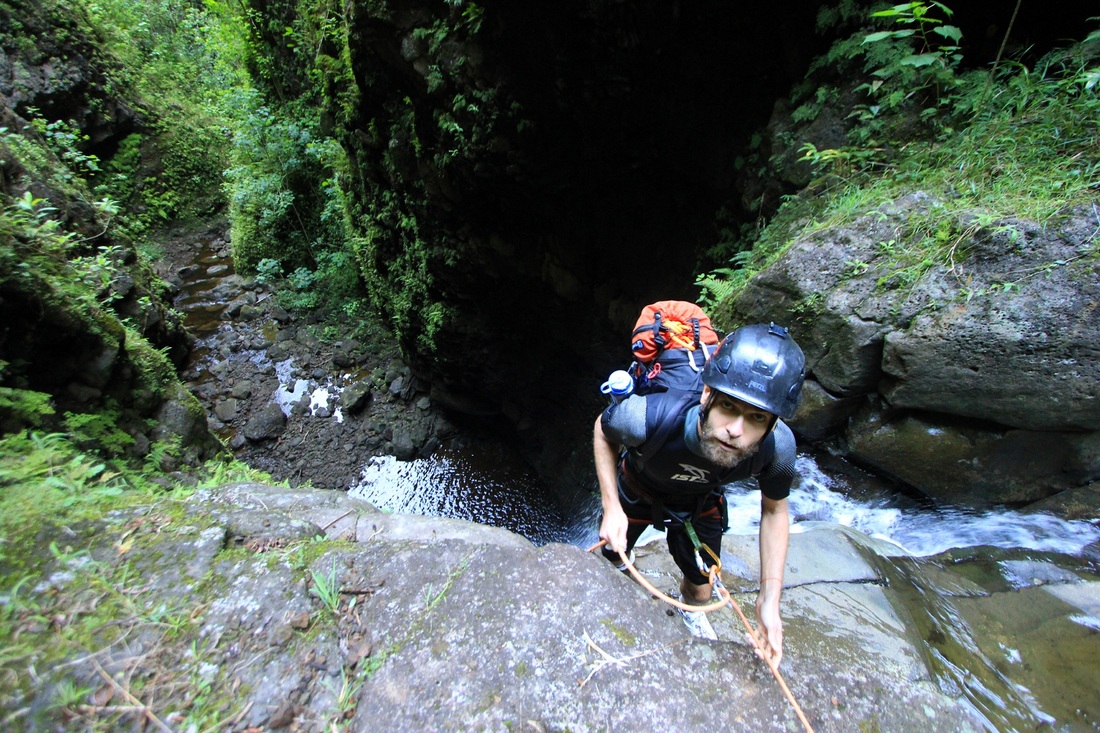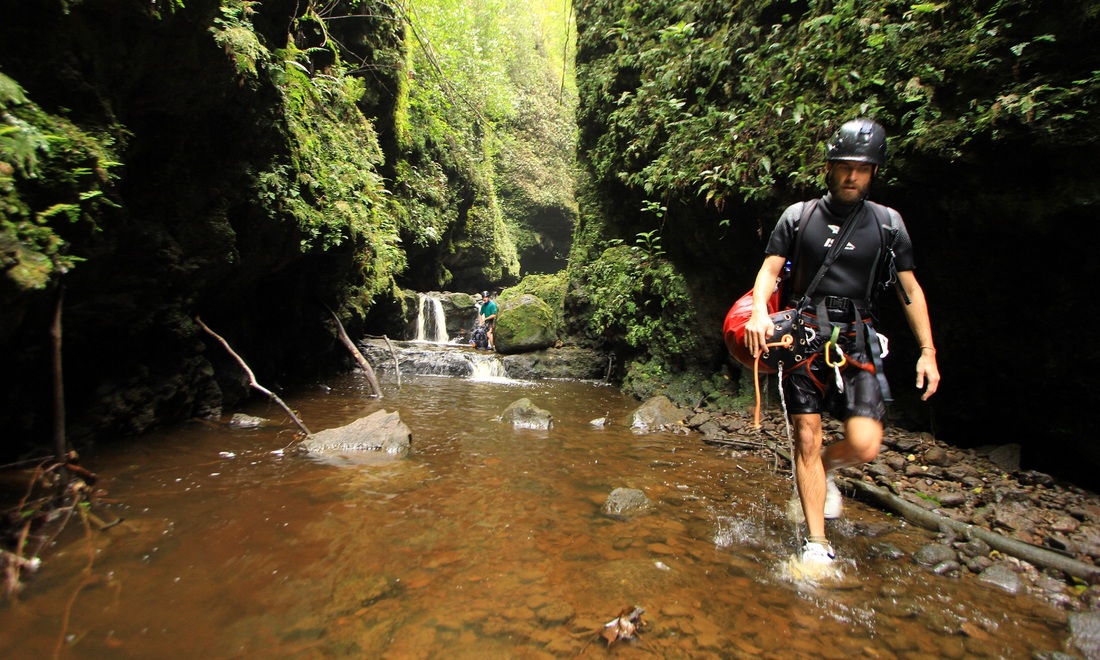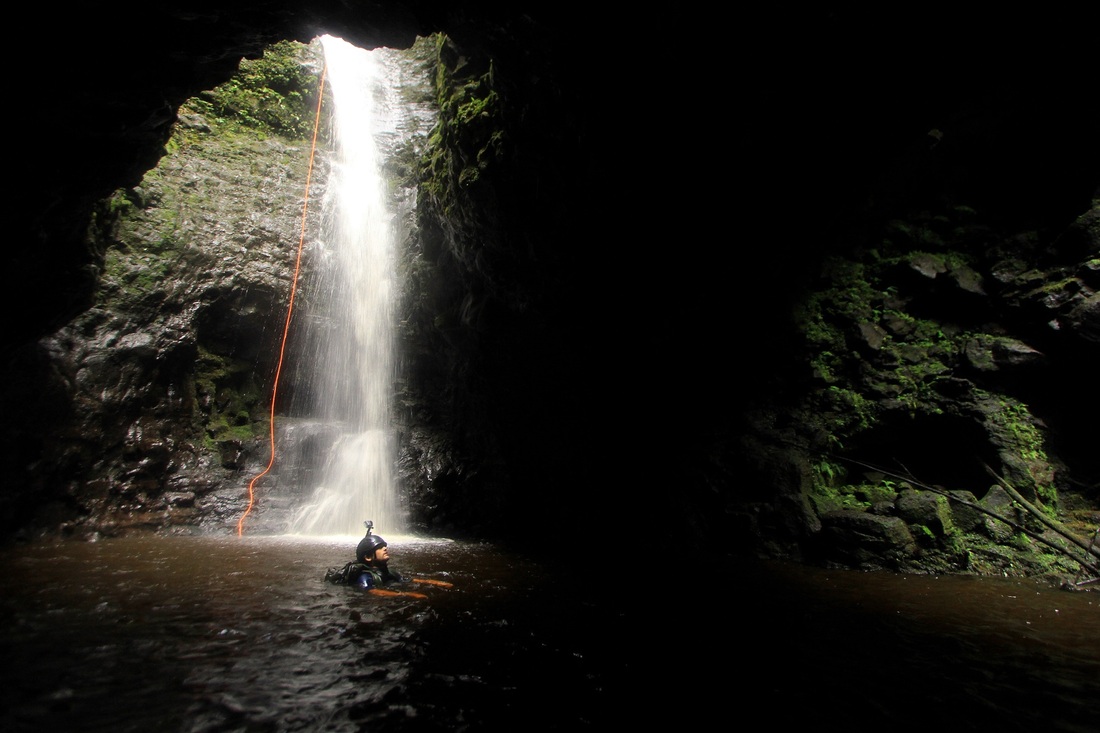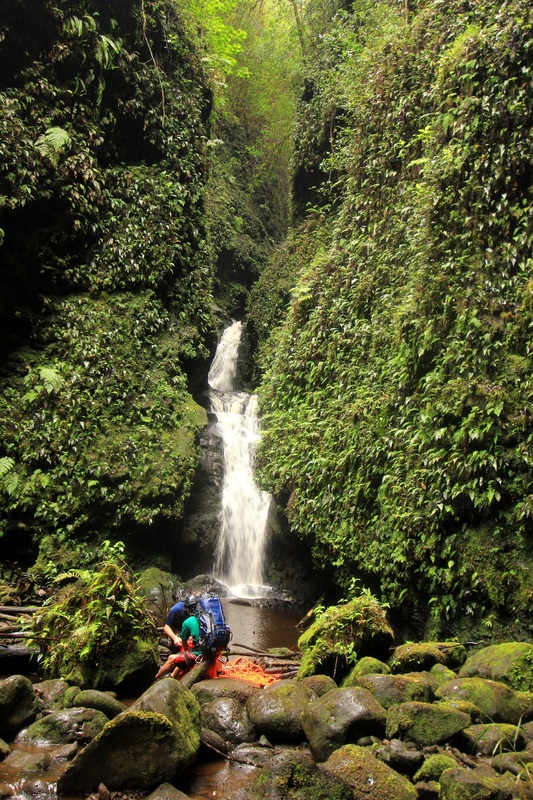ASC Adventure Science Takes Explorers Down Steep Canyons in Search of New Discoveries
Eric Leifer is currently leading a canyoneering expedition to explore some of Hawaii’s most remote and pristine places. Deep gorges formed by creeks on the eastern flank of Mauna Kea and Mount Kohala on the island of Hawaii represent untouched habitat, cut off from the surrounding environment and people. Human development has resulted in the destruction of much of Hawaii’s natural habitat and dangerously impacted its native plant and animal populations through the introduction of invasive species. Leifer and his team are interested in documenting the course of these creeks and the unspoiled habitats through which they travel. Lacking the scientific background to harness the full potential of their expedition, the team reached out to ASC.
“Guarded by sheer canyon walls and buried deep within an impenetrable rain forest, the canyons of Kohala are highly likely to be hiding plants not only previously presumed extinct but also countless species that have yet to ever see a human hand,” the team wrote in a recent statement. “This expedition aims to use its findings to help highlight a new trend in the field of scientific research. Combining explorers with scientists, this new collaboration can yield incredible findings in environments that most researchers do not have the resources [or] experience to access.”
ASC paired Leifer and his team with Emily Johnston, a researcher studying freshwater algae for the University of Hawaii at Manoa. With their help, she is compiling information to better understand the nature of the fragile freshwater ecosystems of Hawaii. “Numerous studies have shown that freshwater ecosystems are among the most heavily impacted by human activities,” said Johnston. “Additionally, these ecosystems are expected to be greatly affected by climate change.” Freshwater algae play important roles in the myriad habitats they occupy, but relatively little is known about their diversity or how their roles might be shifting with climate change.
Leifer and his team, deep in the remote canyons of Hawaii, are gathering samples of algae and recording data about collection sites. The samples, then mailed to Johnston, will be analyzed in a lab, and the data will be synthesized. The discoveries made during this project will not only help to document a remote and unknown area, but will also be used in later comparisons and analyses. “Major goals of my research are to document freshwater algal biodiversity, record species and create a baseline of data against which environmental change can be measured,” Johnston said. Through the explorers’ expertise, she is able to amass data from these remote and delicate freshwater ecosystems, providing her with a wealth of information she could not otherwise obtain.
On his website (Canyonchronicles.com), Leifer wrote, “You would be amazed what you can find when you aren’t looking for anything at all.” Fortunately for the scientific community, he and his team are increasing their odds by partnering with Johnston and arming themselves with the knowledge and ability to actively seek information. The team will likely meet its goal of discovering new species, as Johnston believes that much of the algae the canyoneers collect will be new to science. This will aid her efforts to better understand an imperiled but little known environment, and the information gleaned from their partnership will serve as a testament to the value of uniting science and adventure for everyone’s benefit.
-Liam Dillaway




